Oct. 15, 2018
Prelims Pointers
Oct. 15, 2018
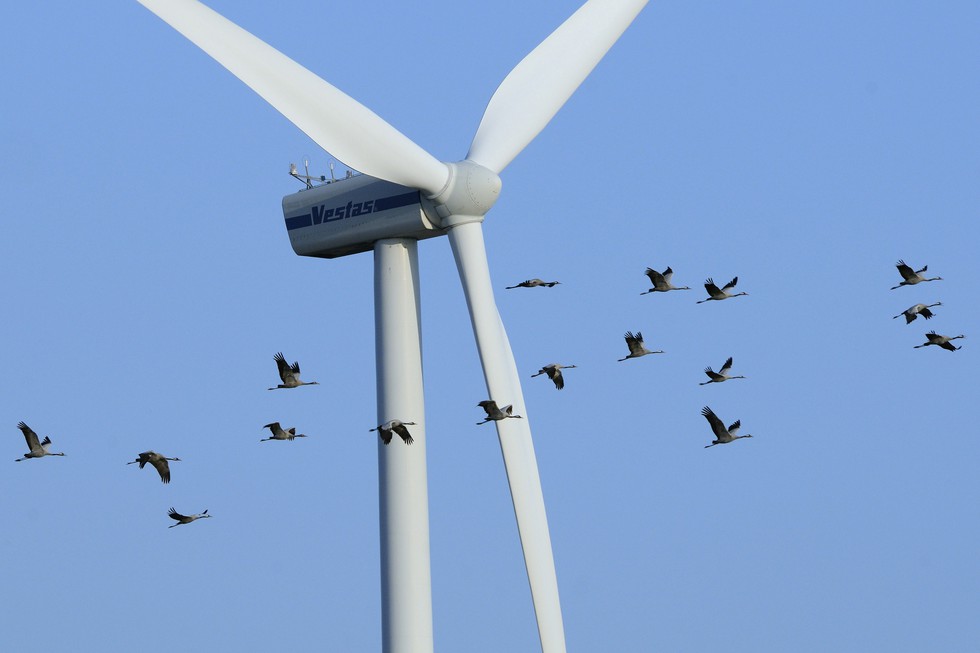
Key Findings:
- Existing scenario of windmills: Karnataka has diverted 37.80 sq. km of forests for wind farms. KREDL says that there are more than 3,857 wind turbines generating 4,730 megawatts of electricity.
- Collisions: Researchers found that windmills killed birds and bats in collisions. The team saw collisions with a collision rate of 0.23 animals per year per turbine. Due to this, birds are avoiding windmill sites.
- Noise levels:
- Birds and mammals also moved away due to the noise.
- The noise levels near windmills go up to 85 decibels (dB), the equivalent of large trucks. By comparison, noise in urban areas is 55 dB and even in industrial areas, is lower at 75dB. Ambient noise in forests is less than 40 dB.
- Due to this, animals are moving from turbine locations to forest fringes Such avoidance and movement to fringes might increase conflict with humans.
- Birds and mammals also moved away due to the noise.
- Recommendations: This calls for protocols and policy guidelines before diverting forest land for wind farms.
Prelims Pointers
Oct. 15, 2018
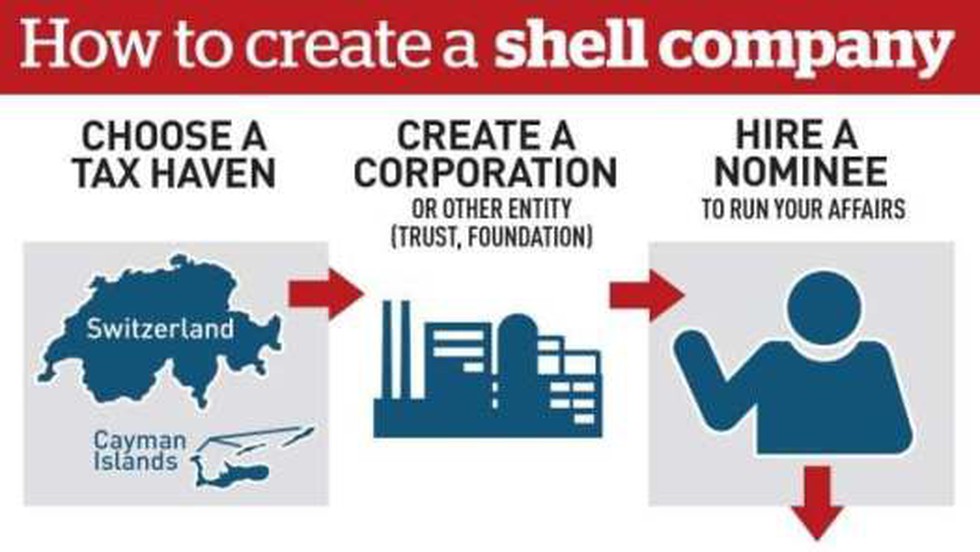
About:
- The term “Shell Company” is undefined in the Companies Act, 2013.
- But generally, these are seen as bogus entities that do not produce anything but are used as a channel to evade tax.
- Reasons for setting a shell company:
- These types of corporations are not all necessarily illegal, but they are sometimes used illegitimately, such as to disguise business ownership from law enforcement or the public.
- Legitimate reasons for a shell corporation include such things as a startup using the business entity as a vehicle to raise, funds, conduct a hostile takeover or to go public.
- These types of corporations are not all necessarily illegal, but they are sometimes used illegitimately, such as to disguise business ownership from law enforcement or the public.
Prelims Pointers
Oct. 15, 2018

About:
- Implementing ministry: Ministry of Housing and Urban Poverty Alleviation.
- Coverage: The scheme covers all the 4041 statutory cities and towns.
- Objectives:
- To reduce poverty and vulnerability of the urban poor households by enabling them to access gainful self-employment and skilled wage employment opportunities.
- Providing the shelter equipped with essential services to the urban homeless in a phased manner.
- Providing suitable space, institutional credit, and social security and skills to the urban street vendor for accessing emerging market opportunities.
- To reduce poverty and vulnerability of the urban poor households by enabling them to access gainful self-employment and skilled wage employment opportunities.
Prelims Pointers
Oct. 15, 2018

About:
- Commercial Paper (CP) is an unsecured money market instrument issued in the form of a promissory note.
- Objective: The instrument was introduced in 1990 to enable highly rated corporate borrowers to diversify their sources of short-term borrowings, and also to provide an additional instrument to investors.
- Maturity Period: CPs are short-term instruments and the maturity period varies from seven days to up to one year.
- Who can issue them? CPs can be issued by corporates, primary dealers, and financial institutions. Eligible participants should have a minimum credit rating of A-2 at the time of the issuance of the CP.
Prelims Pointers
Oct. 15, 2018
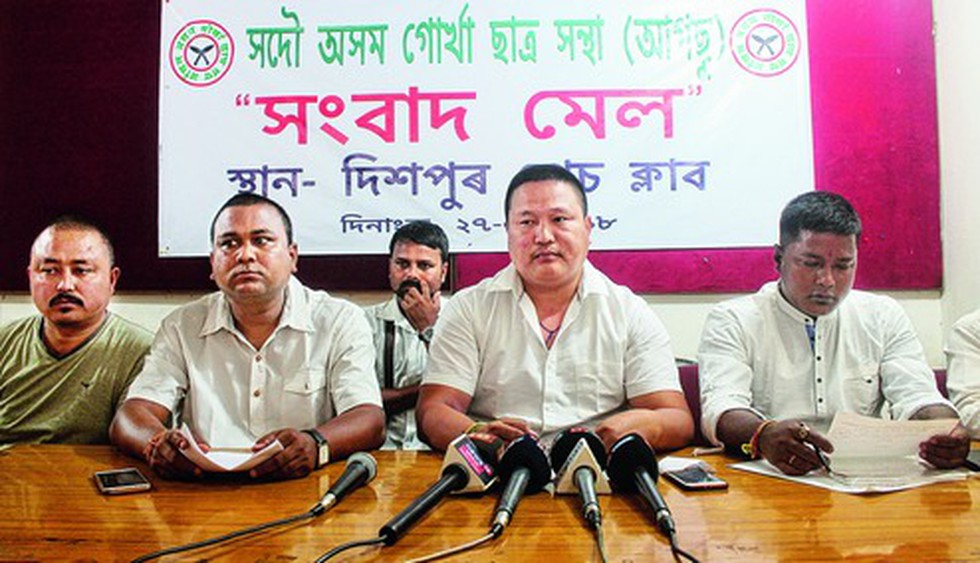
About:
- Nomenclature: Gorkhas (or Gurkhas) are Nepali-origin people who take their name from the 8th century Hindu warrior-saint Guru Gorakhnath and from the Nepal hill town of Gorkha.
- Indian Gorkhas:
- In India, the word is sometimes used to make a distinction between Indian Gorkhas, who are citizens of India, and Nepali citizens who are living in India.
- Most of Indian Gorkhas are descendants of Gorkhas settled in India during British rule (The British Army had raised several Gorkha units in India).
- Demography: West Bengal has the highest number of Nepali-speaking citizens, and Sikkim the highest density.
- In India, the word is sometimes used to make a distinction between Indian Gorkhas, who are citizens of India, and Nepali citizens who are living in India.
Recent development:
- At a time when the National Register of Citizens (NRC) is being updated, the All Assam Gorkha Students’ Union made a representation to the Home ministry about members of the community being referred to Foreigners Tribunals.
- The ministry cited the Foreigners Act (1946) and the 1950 treaty to state that Gorkhas cannot be referred to these tribunals. The Indian Gorkhas of Assam are eligible for inclusion in the Assam NRC, by virtue of being Indian citizens.
Prelims Pointers
Oct. 15, 2018

Background:
- Following the #MeToo campaign on social media, Union Government has recently announced its plan to set up a panel of judges to look into the legal and institutional framework to curb sexual harassment at workplaces.
- However, as early as 2013, the Justice J.S. Verma Committee on gender laws, recommended sweeping changes to the Sexual Harassment at the Workplace Bill. The panel was formed in the aftermath of the December 16 Nirbhaya gangrape in 2012 which submitted its report in 2013.
- The Committee termed the Sexual Harassment Bill “unsatisfactory” and said it did not reflect the spirit of the Vishakha guidelines — framed by the Supreme Court in 1997.
- An internal complaints committee (ICC) under the law would be “counter-productive” as dealing with such complaints in-house could discourage women from filing complaints.
- The Committee termed the Sexual Harassment Bill “unsatisfactory” and said it did not reflect the spirit of the Vishakha guidelines — framed by the Supreme Court in 1997.
Recommendations by Verma Panel Justice J.S. Verma Committee:
- Form State-level employment tribunal to adjudicate all complaints, instead of an ICC.
- Tribunal should be appointed by a collegium headed by the Chief Justice of the concerned High Court.
- It should comprise two retired judges with at least one of them being a woman, two eminent sociologists and one social activist in the field of gender-based discrimination.
- To ensure speedy disposal of complaints, the tribunal should not function as a civil court but may choose its own procedure to deal with each complaint.
- Tribunal should be appointed by a collegium headed by the Chief Justice of the concerned High Court.
- Any “unwelcome behaviour” should be seen from the subjective perception of the complainant, thus broadening the scope of the definition of sexual harassment.
- The time-limit of three months to file a complaint should be done away with and a complainant should not be transferred without her consent.
- To encourage women to file complaints, it opposed penalising women for false complaints.
- An employer could be held liable if he or she facilitated sexual harassment and permitted an environment where sexual misconduct becomes widespread and systemic.
Prelims Pointers
Oct. 15, 2018
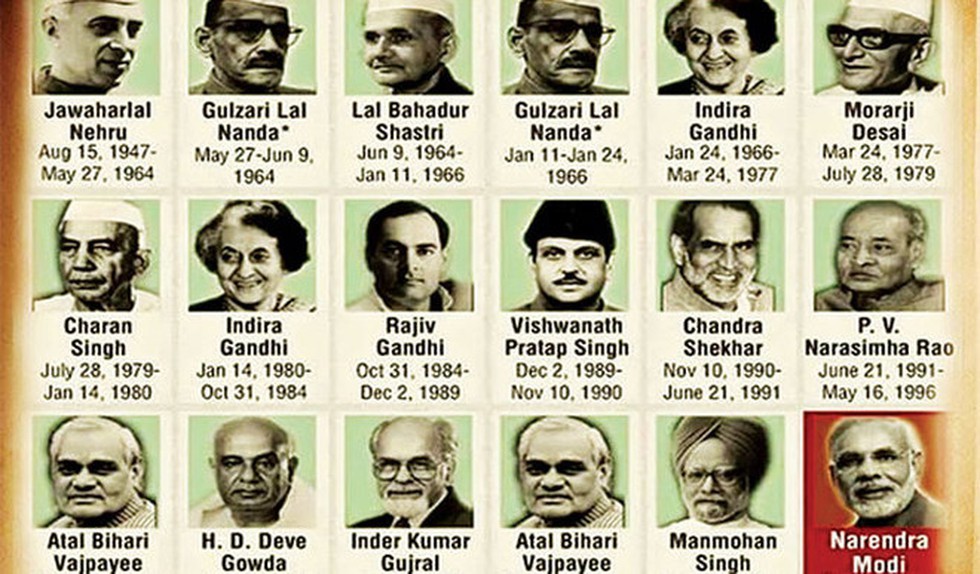
Nehru Memorial Museum & Library (NMML):
- Status: The Nehru Memorial Museum & Library (NMML) is an autonomous institution under the Ministry of Culture, Government of India.
- Background: It was established in 1964 in the memory of First Prime Minister (PM) of India, Pandit Jawaharlal Nehru (1889 - 1964).
- Location: It is located in the Teen Murti House, Delhi (the official residence of the first PM).
- Administration: Prime Minister of India Is the President of the NMML.
- Units: It has four major constituents namely –
- Museum On Prime Ministers Of India: The new museum will include the memorabilia of the Prime Ministers, and is expected to cost Rs. 270 crore.
- a Library on modern India,
- a Centre for Contemporary Studies and
- Nehru Planetarium.
- Museum On Prime Ministers Of India: The new museum will include the memorabilia of the Prime Ministers, and is expected to cost Rs. 270 crore.
Oct. 14, 2018
Prelims Pointers
Oct. 14, 2018

About:
- Shekhar C Mande is a structural biologist with a doctoral degree from the Indian Institute of Science, Bengaluru.
- He is the director of the Pune-based National Centre for Cell Science (NCCS) since 2011.
- He is a recipient of the coveted SS Bhatnagar Prize, most prestigious science honour in the country, in 2005.
|
Shanti Swarup Bhatnagar Prize for Science and Technology? · Given by: CSIR. · When given: it is an annual award. The names of the recipients are traditionally declared by the Director General on every 26 September, which is the CSIR Foundation Day. · Prizes: The prize is divided into seven disciplines, namely: (1) Physical Sciences, (2) Chemical Sciences, (3) Biological Sciences, (4) Medical Sciences, (5) Mathematical Sciences, (6) Engineering Sciences and (7) Earth, Atmosphere, Ocean and Planetary Science. · Further, each discipline can have multiple winners (maximum 2 individuals). · Prize money: ₹5 lakh. · The award is named after Shanti Swarup Bhatnagar (1894 – 1955), the first director-general of the CSIR and the first Chairman of the UGC. In 1954 he was awarded Padma Bhushan. |
Prelims Pointers
Oct. 14, 2018

National Centre for Cell Science (NCCS):
- The National Centre for Cell Science (NCCS) is an autonomous organisation aided by the Department of Biotechnology, Government of India.
- Its mandate is to serve as a national repository of animal cell cultures and undertaking research in cell biology.
- NCCS is located within the campus of the P. Pune University, Pune, Maharashtra.
Recent decision:
- Currently, the National Centre for Disease Control (NCDC) and the Indian Council of Medical Research (ICMR) carry out anti-microbial resistance surveillance in various geographical regions and settings. But these two bodies only collect data and not microbe samples.
- The new bio-repository at NCCS will receive, store, maintain¸ preserve and characterise multidrug-resistant microbes.
- Multidrug-resistant microbes received from different settings in the same city and from other across the country will help shed light on the spread and resistance pattern of these microbes.
Prelims Pointers
Oct. 14, 2018

About:
- NASA's Chandra X-ray Observatory is a telescope specially designed to detect X-ray emission from very hot regions of the Universe such as exploded stars, clusters of galaxies, and matter around black holes.
- Because X-rays are absorbed by Earth's atmosphere, Chandra must orbit above it, up to an altitude of 139,000 km (86,500 mi) in space.
- The Smithsonian's Astrophysical Observatory in Cambridge, MA, hosts the Chandra X-ray Centre which operates the satellite, processes the data, and distributes it to scientists around the world for analysis.
- It was launched in 1999 and is named after the Nobel Prize-winning Indian-American astrophysicist Subrahmanyan Chandrasekhar.
Prelims Pointers
Oct. 14, 2018

About:
- With induction of the deep submergence rescue vehicle (DSRV), India has joined a select group of countries that have the capability to locate and rescue "distressed submarines". At present, the US, China, Russia and a few other countries have the capabilities to deploy DSRVs.
- Though DSRVs are used for rescue of personnel in downed submarines, they are also deployed for various other missions including to lay cables on the sea bed.
- The DSRV which was inducted can be mobilised from the naval base in Mumbai to nearest mounting port by air, land and sea. The second DSRV is expected to be inducted at Visakhapatnam in 2019.
- Induction of the DSRV was part of the Navy's efforts to enhance operational capabilities when China has been increasing its maritime presence in critical sea lanes which are of strategic importance to India.
Prelims Pointers
Oct. 14, 2018

About:
- The mithun or gayal (Bos frontalis), is considered a descendant of the Indian Gaur or bison.
- It is distributed in Northeast India, Bangladesh, northern Myanmar and in Yunnan, China.
- Reared under free-range conditions in hilly forests, the mithun is known as the ‘cattle of the mountain’.
- It plays an important role in the socio-economic and cultural life of tribes such as the Nyishi, Apatani, Galo and Adi in Arunachal Pradesh.
- The gayal is the state animal of Arunachal Pradesh and Nagaland.
- IUCN status:
- It is listed in CITES Appendix I.
The National Research Centre on Mithun was established at Jharnapani, Dimapur, Nagaland under the Indian Council of Agriculture Research (ICAR). Its mandate is to develop the scientific and sustainable mithun rearing system and for catering the needs of mithun farmers.
Prelims Pointers
Oct. 14, 2018
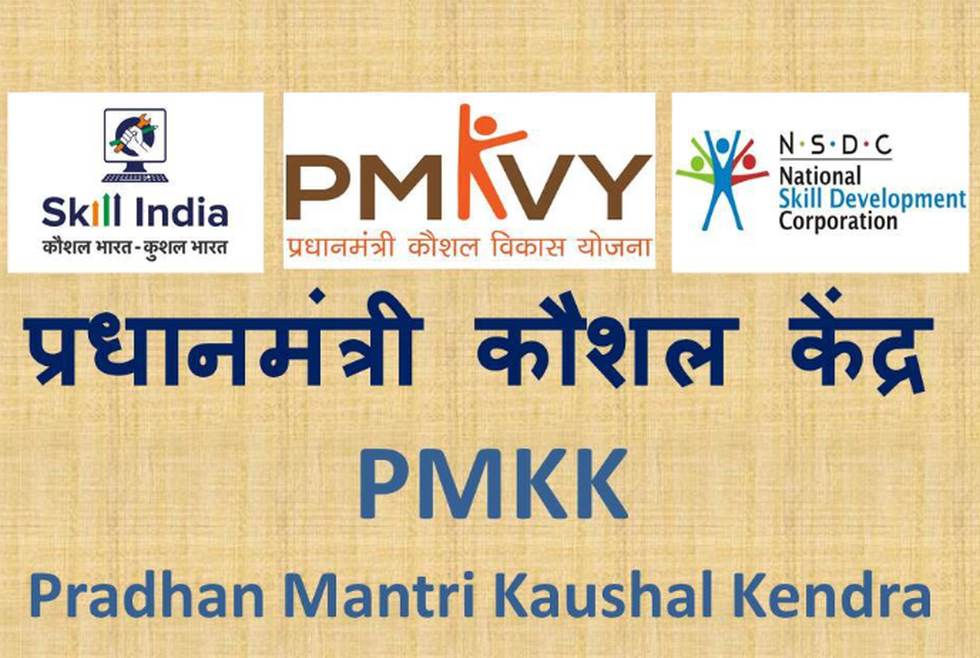
About:
- Pradhan Mantri Kaushal Kendra (PMKK) is the flagship scheme of Union Ministry of Skill Development and Entrepreneurship.
- Under it, the Centre is setting up 600 skill training centres in identified districts. Out of 600 PMKKs, 480 have been set up and are operational.
Prelims Pointers
Oct. 14, 2018

About:
- NHRR is Country’s first ever national healthcare facility registry of authentic, standardized and updated geo-spatial data of all public and private healthcare establishments.
- The vision of the NHRR Project is to develop robust, standardized and secured IT-enabled repository of India’s healthcare resources.
- It provides comprehensive information of both, Private and Public healthcare establishments including Railways, ESIC, Defence and Petroleum healthcare establishments.
- Under the Collection of Statistics Act 2008, over 20 lakh healthcare establishments like hospitals, doctors, clinics, diagnostic labs, pharmacies and nursing homes would be enumerated under this census capturing data on over 1,400 variables.
- It was launched by Union Health Ministry in June 2018.
- It is conceptualized by the Central Bureau of Health Intelligence (CBHI). The Indian Space Research Organisation (ISRO) is the project technology partner for providing data security.
Prelims Pointers
Oct. 14, 2018
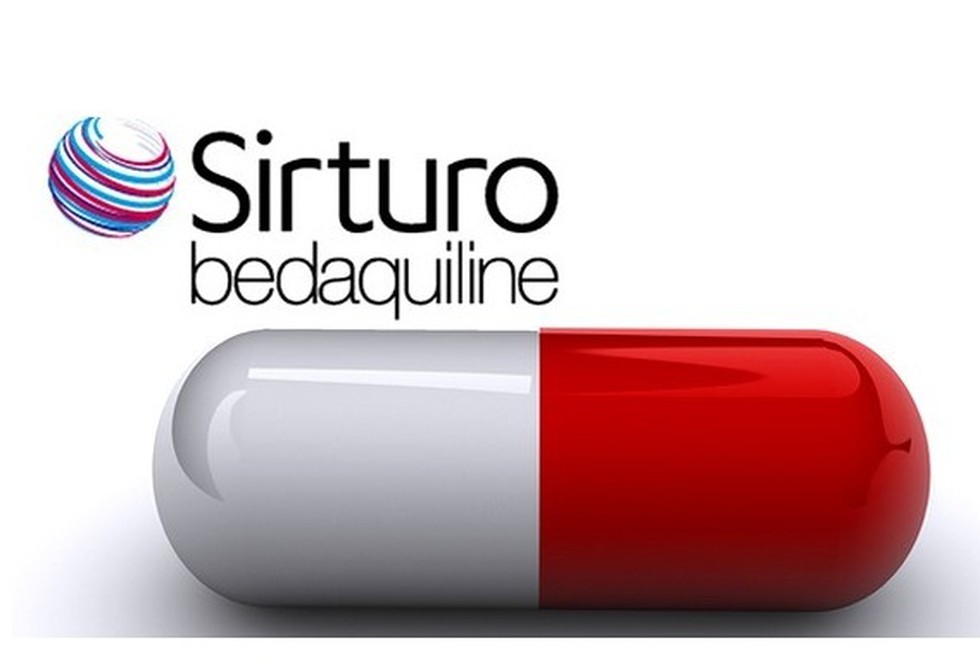
About:
- Bedaquiline is a bactericidal drug which belongs to a new class of antibiotics (diarylquinolines).
- Usage: It is recommended by WHO specifically for the treatment of patients suffering from multidrug-resistant tuberculosis (MDR-TB). It is not recommended for treating latent TB infection.
- Functioning: It is different from other anti-TB drugs as it interferes with the function of an enzyme required by the tuberculosis bacterium to produce energy and to replicate.
- Side-effects: However, Bedaquiline has been reported to disturb the function of the heart and liver in particular. Thus, patients using this needs to be closely monitored.
- Usage in India: The drug is made available only to the Centre, which in turn rations it to the States. It is not available for private purchase because of concerns of drug-resistance by Mycobacterium tuberculosis, the bacterium that causes TB.
Prelims Pointers
Oct. 14, 2018

About:
- It is the largest lake in the city of Bangalore. Water from this lake flows further to Varthur Lake.
- Currently the lake is highly polluted as most of Bengaluru's treated and untreated sewage along with industrial waste is released into it.
- This has led to the problem of The presence of industrial chemicals in the water causes the lake surface to catch fire periodically.
In 2013, Union Cabinet approved the merger of National Lake Conservation Plan (NLCP) and National Wetlands Conservation Programme (NWCP) into a new scheme called the 'National Plan for Conservation of Aquatic Eco-Systems' (NPCA).
Its primary objective is to ensure holistic conservation of lakes and wetlands for improving water quality and biodiversity.
Prelims Pointers
Oct. 14, 2018

About:
- Garba is a form of dance which originated in Traditional garbas are performed around centrally lit lamp or a picture or statue of the Goddess Shakti.
- Women normally perform it in a graceful and rhythmic manner in a circle as they rotate around the object placed in the centre. The dancer’s whirl and move their feet and arms in a choreographed manner to the tune of the music with lots of drum beats.
- The women wear traditional dresses such as colourful embroidered choli, ghagra and bandhani dupattas dazzling with mirror work and heavy jewellery.
- Traditionally, it is performed during the nine-day Hindu festival Navaratri.
Garba vs Dandiya Raas:
- Dandiya Raas is played with pair of colourfully decorated sticks, while Garba consists of various hand and feet movements.
- Most of the Dandiya steps require even number of people while in Garba there is no such requirement on number of people.
- The circular movements of Dandiya Raas are much more complex than that of Garba.
- While Garba is performed by women, men and women join in for Dandiya.
Oct. 13, 2018
Prelims Pointers
Oct. 13, 2018

About:
- P. Sivagnanam, (Mylapore Ponnuswamy Sivagnanam) popularly known as Ma.Po.Si (1906 –1995), was an Indian politician and author of more than 100 books.
- In 1946 he started a movement called 'Tamil Arasu Kazhagam' and demanded proper status for Tamil in administration and education.
- Ma Po Si wrote “Kappalottiya Thamizhan” a biography of V.O. Chidambaram Pillai that became so popular with the masses that V.O.Chidambaram Pillai was subsequently remembered by all as 'Kappalottiya Thamizhan'.
- He was awarded "Sahithya Academy Award" in 1966 for the book written by him Vallalarkanda Orumaipadu; and ‘Padmashri’ in 1972.
Prelims Pointers
Oct. 13, 2018
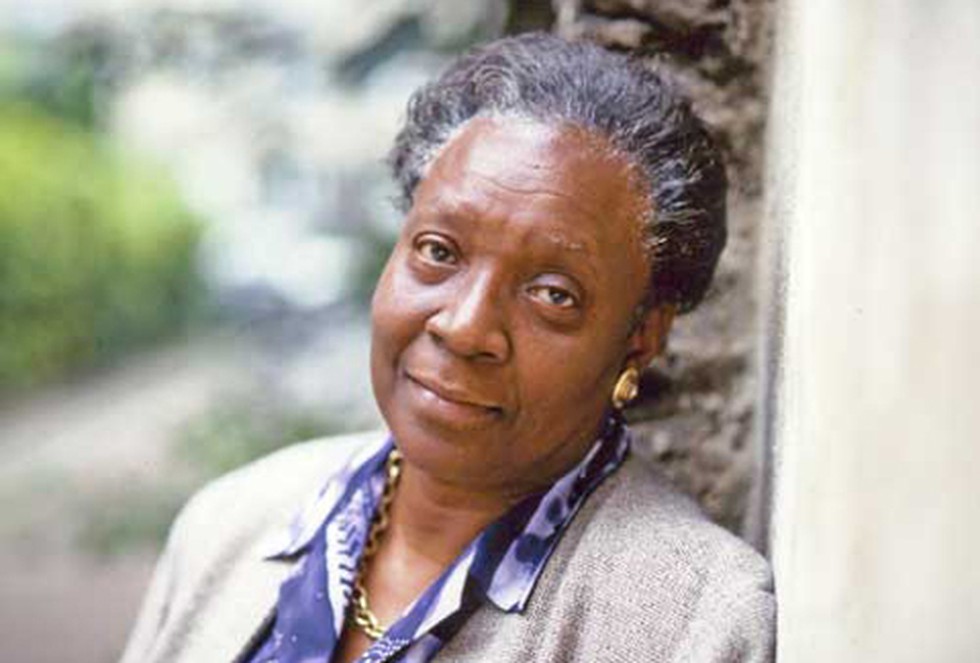
New Academy prize:
- The New Academy prize is a one-off award intended to fill the gap left by the cancellation of this year’s Nobel prize for literature, postponed this year over a rape scandal that came to light as part of the #MeToo movement.
- It was presented by New Academy, which has been founded by more than 100 Swedish writers, artists and journalists. The New Academy will be dissolved in December 2018.
- Unlike the secretive deliberations of the Nobel jury, the New Academy prize saw Swedish librarians nominate authors, who were winnowed down to a final four by a public vote, the winner decided by an expert jury.
Maryse Conde:
- Maryse Conde is a French (Guadeloupean) author of historical fiction.
- She is the author of some 20 novels, including Desirada, Segu and Crossing the Mangrove.
- According to the new academy, she describes the ravages of colonialism and the post-colonial chaos in a precise and overwhelming language.
Guadeloupe is a group of islands in the eastern Caribbean, and is a French overseas department. It is located southeast of Puerto Rico
Prelims Pointers
Oct. 13, 2018

About:
- Objective of the GenomeAsia 100k project, first announced in 2016, is to sequence the whole genomes of 100k Asians, including 50,000 Indians.
- It is being led out of the National Technological University (NTU), Singapore.
- The project is similar to the projects in the United Kingdom, China, Japan and Australia and the information from this will be used to improve health by designing ‘personalised medicine.’
- The Ministry of Health and Family Welfare and the Department of Biotechnology would be closely associated with the project.
- The Ministry of Health and Family Welfare and the Department of Biotechnology would be closely associated with the project.
In 2009, the Council of Scientific and Industrial Research (CSIR) announced that it had sequenced the genome of an Indian, then making India one of six countries to achieve such a feat.
Prelims Pointers
Oct. 13, 2018

About:
- Index of Industrial production is published by the central statistical organisation (CSO), Ministry of Statistics and Programme Implementation every month, six weeks after the reference month ends.
- The current base year of the index is 2011-12=100.
- The index shows the changes in the production volume of different industrial commodities. It is an essential measure of growth as it records the level of industrial activity in the economy.
- The sub-components of IIP are- Mining, Manufacturing, and Electricity.
- The IIP is also classified according to its use namely, Primary Goods, Capital Goods, and Intermediate Goods.
The scope of the IIP as recommended by the United Nations Statistical Office (UNSO) includes mining, manufacturing, construction, electricity, gas and water supply. But due to constraints of data availability, the IIP compiled in India has excluded construction, gas and water supply sectors.
Prelims Pointers
Oct. 13, 2018

About:
- International Egg Commission has declared the second Friday of October every year as World Egg Day.
This is celebrated in countries all around the world to help raise awareness of the nutritional benefits of eggs.
India is the third highest producer of eggs in the world, but the per capita availability is around 69 eggs per person per year.
Egg is a wholesome, nutritious food with high nutrient density. It is a high value protein and provides a wide variety of other nutrients like vitamins, essential amino acids and minerals etc.
Prelims Pointers
Oct. 13, 2018

About:
- The current GDP and Gross Value Added measures have also been questioned by Opposition leaders and economists alike.
- Reasons cited by the committee for overhaul of measurement of India’s GDP:
- It does not measure the depletion of Natural resources.
- It ignores the economic contribution of women in running households.
- It does not factor the change in the output quality due to technological advances.
- It does not factor the impact of artificial intelligence in employment.
- It does not measure whether GDP adds to happiness of the citizens.
- It does not measure the depletion of Natural resources.
Prelims Pointers
Oct. 13, 2018
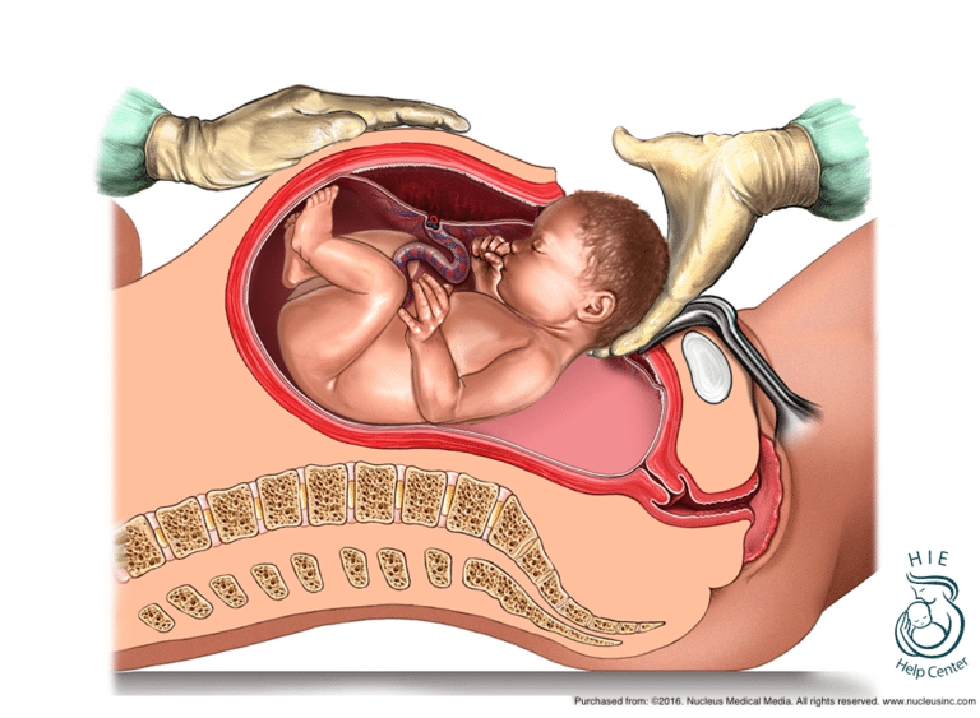
About:
- C-section is a life-saving intervention for women and newborns when complications occur, such as bleeding, foetal distress, hypertensive disease, and babies in abnormal position.
- However, the surgery is not without risk for mother and child, and is associated with complications in future births.
- It is estimated that 10-15% of births medically require a C-section due to complications, suggesting that average C-section use should lie between these levels.
Key findings of Lancet Journal:
- Globally, C-section use has increased from 12% of live births (16 million of 131.9 million) in 2000, to 21% of live births (29.7 million of 140.6 million) in 2015, researchers said.
- In India, The number of babies born through C-Section increased from 9% in 2005-6 to 18.5% in 2015-16.
- While the surgery is still unavailable for many women and children in low-income countries and regions, the procedure is overused in many middle-and high-income settings. In at least 15 countries, C-section use exceeds 40%.
- The South Asia region has seen the most rapid increase in C-section use (6.1% per year) in the period 2000 – 2015.
Prelims Pointers
Oct. 13, 2018

About:
- The panel will look into the legal and institutional framework which is in place for handling complaints of sexual harassment at workplaces and advise the Ministry on how to strengthen the frameworks.
- WCD minister also said that the complaints can be given to the Internal Complaints Committee (ICC) or can be submitted at the dedicated portal of www.shebox.nic.in.
Under Sexual Harassment of Women at Workplace (Prevention, Prohibition and Redressal) Act, 2013, every employer is required to constitute an Internal Complaints Committee (ICC) at each office or branch with 10 or more employees.
In 2017, WCD Minister launched a comprehensive SHe-Box online complaint Management System for women working in both public and private organizations to lodge complaints of sexual harassment at workplace.
The SHe-Box would ensure the effective implementation of the Sexual Harassment of Women at Workplace (Prevention, Prohibition and Redressal) Act (the SH Act), 2013.
Prelims Pointers
Oct. 13, 2018

About:
- The Human Rights Council is an inter-governmental body within the United Nations system.
- It meets at the UN Office at Geneva.
- Functions:
- It investigates allegations of breaches of human rights in UN member states.
- It also addresses important thematic human rights issues such as freedom of expression, women's rights, LGBT rights, and the rights of racial and ethnic minorities.
- The UNHRC works closely with the Office of the High Commissioner for Human Rights (OHCHR).
- It investigates allegations of breaches of human rights in UN member states.
- Establishment: It was founded in 2006. It replaced the former United Nations Commission on Human Rights (UNCHR) that had been strongly criticised for allowing countries with poor human rights records to be members.
- Membership:
- The Council is made of 47 Member States, which are elected by the UN General Assembly. The Council's Membership is based on equitable geographical distribution.
- Members of the Council serve for a period of three years and are not eligible for immediate re-election after serving two consecutive terms.
- In June 2018, the United States announced its withdrawal from the United Nations Human Rights Council (UNHRC) terming it “hypocritical and self-serving.”
- The Council is made of 47 Member States, which are elected by the UN General Assembly. The Council's Membership is based on equitable geographical distribution.
Recent elections for new members:
- The 193-member UN General Assembly held elections here for new members to the UNHRC. The 18 new members were elected by absolute majority through a secret ballot.
- India had previously been elected to the UNHRC for the 2011-2014 and 2014-2017 terms.
Prelims Pointers
Oct. 13, 2018

About:
- Background: NHRC was established in 1993. It is in conformity with the Paris Principles, adopted at the first international workshop on national institutions for the protection of human rights held in Paris in 1991.
- Status: It is a statutory organization established under the Protection of Human Rights Act (PHRA), 1993.
- It is headquartered in New Delhi.
- Functions:
- The purpose of the NHRC is, suo moto or through the petition of a person, to investigate the violation of human rights or the failures of the state or other to prevent a human rights violation.
- The commissions may also take on research about human rights, create awareness campaigns through various mediums, and encourage the work of NGOs.
- The purpose of the NHRC is, suo moto or through the petition of a person, to investigate the violation of human rights or the failures of the state or other to prevent a human rights violation.
- Composition:
- The Commission consists of a Chairperson, four full-time Members and four deemed Members.
- The statute lays down qualifications for the appointment of the Chairperson and Members of the Commission. A Chairperson, should be retired Chief Justice of India.
- The Commission consists of a Chairperson, four full-time Members and four deemed Members.
|
GANHRI Accreditation? In 2017, The National Human Rights Commission, India has retained its 'A' status of accreditation with the Global Alliance of National Human Rights Institutions (GANHRI) for the fourth consecutive term of five years. It is given to those NHRIs, which, after a rigorous process of review every five years, are found fully compliant with the UN mandated Paris Principles. |
Oct. 12, 2018
Prelims Pointers
Oct. 12, 2018

About:
- The Center will help in tapping potential of Space Applications for the region of J&K in various fields like disaster management, health, education, communication, weather forecasting, land use planning, etc.
- It will have ground-based observations for atmospheric studies, research lab for astrophysics, atmospheric sensing and glacier studies lab for better use of large quantity of water is stored in the form of seasonal snow, ice and glaciers in the rivers of North India.
- Apart from this, disaster management centre will also be set up.
Prelims Pointers
Oct. 12, 2018
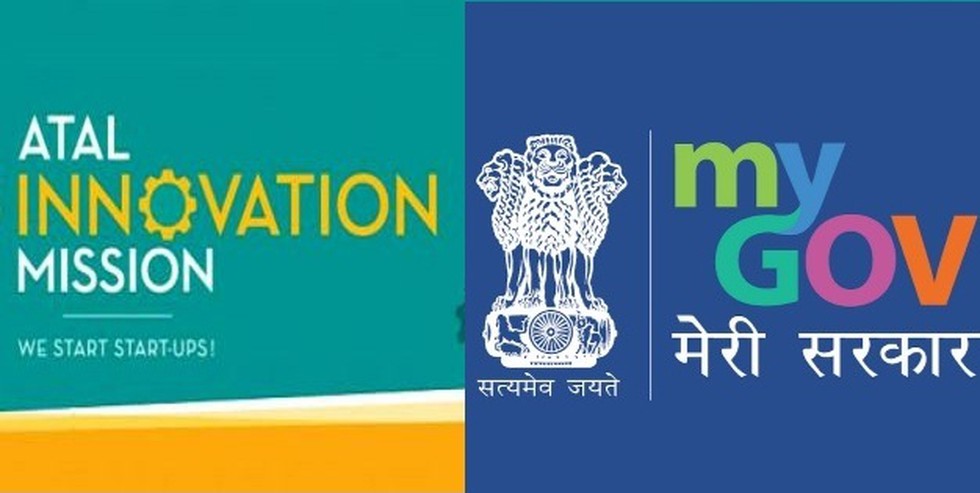
About:
- Objective: The Atal Innovation Mission (AIM) including Self-Employment and Talent Utilisation (SETU) is Government of India's endeavor to promote a culture of innovation and entrepreneurship esp. in technology driven areas.
- Mission HQ: New Delhi.
- Background: In 2016, Union Cabinet approved the establishment of Atal Innovation Mission (AIM) and Self-Employment and Talent Utilisation (SETU) in NITI Aayog.
- It has two core Functions: (1) Entrepreneurship promotion through Self-Employment and Talent Utilisation wherein innovators will be supported to become successful entrepreneurs and (2) Innovation promotion to provide a platform where innovative ideas are generated.
Components:
Following are the three platforms established by AIM to promote entrepreneurship in the country.
- Atal Tinkering Labs (ATLs): ATLs will be established in school across India as a workspace where young minds can give shape to their ideas through hands-on do-it-yourself mode, and learn innovation skills.
- Atal Incubation Centres (AICs): To be established across India to help start-ups expand quicker and enable innovation-entrepreneurship, in core sectors such as manufacturing, transport, energy, education, agriculture, water and sanitation, etc.
- Scale-up support to Established Incubators (EIC): Under it, the start-up ecosystem in the country will be transformed by upgrading the Established Incubation Centres to world-class standards.
Prelims Pointers
Oct. 12, 2018
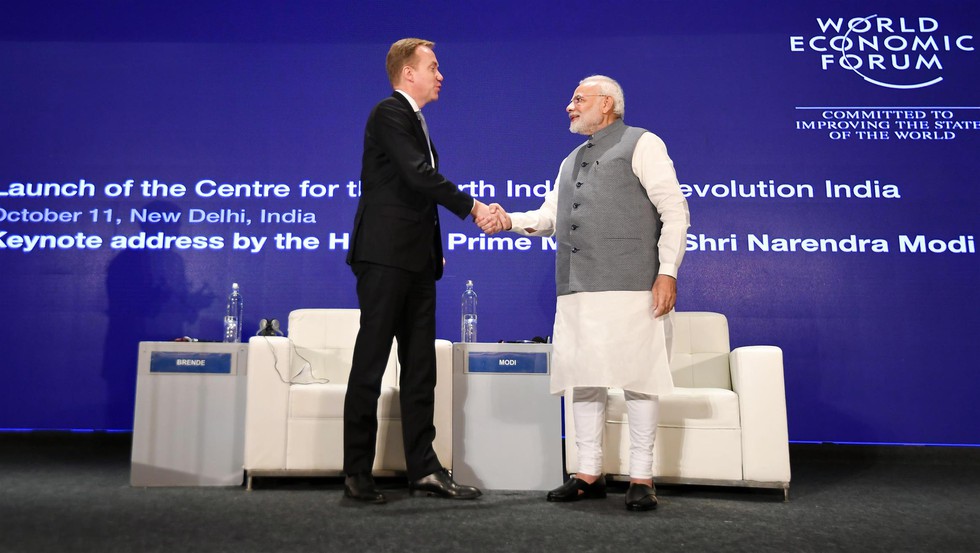
About:
- The centre is being setup by World Economic Forum (WEF) and would be based in
- The new centre will work in collaboration with the government on a national level to co-design new policy frameworks for emerging technology alongside leaders from business, academia, start-ups and international organizations.
- NITI Aayog will coordinate the partnership on behalf of the government and the work of the centre among multiple ministries.
- The centre has selected drones, artificial intelligence and blockchain as the first three project areas
Prelims Pointers
Oct. 12, 2018
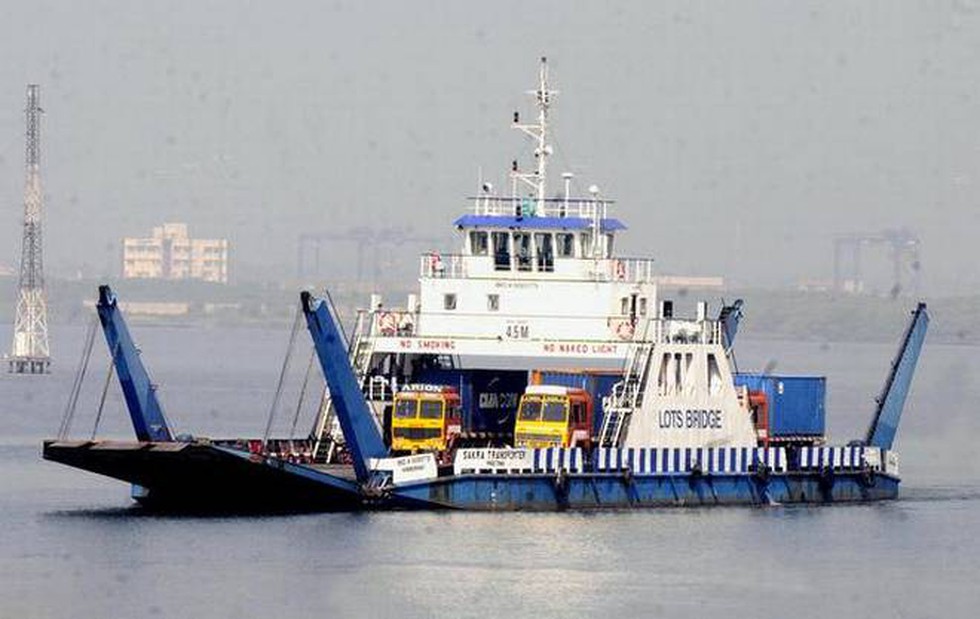
About:
- “Ro-Ro” stands for Roll-on & Roll-off.
- These waterways projects comprise of Ro-Ro ships/vessels which are designed to carry wheeled cargo (such as cars, trucks etc) that are driven on and off the ship on their wheels or using a platform vehicle and related port terminal and approach connectivity infrastructure.
- While passenger jetties are used solely to ferry passengers, Ro-Ro jetties have built-in or have shore-based ramps that allow the cargo to be efficiently rolled on and off the vessel when in port.
- Ro-ro vs Lo-Lo: It is different from the so-called Lo-Lo services in which vehicles can’t roll on and roll off the boat, but are lifted on and off by a crane.
Recent development:
- The RoRo service was launched in collaboration between Inland Waterways Authority of India and Assam government.
- This Ro-Ro facility will cut down the circuitous road route of 423 KMs that trucks take from Neamati to Majuli Island via Tezpur Road Bridge, by limiting the distance to only 12.7 KM with the use of river route.
- The vessel which is 46.50-meter-long and 13.30-meter-wide has a carrying capacity of eight trucks and 100 passengers. The vessel can sail at the speed of 22 km per house.
- Earlier, IWAI had started a similar Ro-Ro service between Dhubri and Hatsingimari which reduced the travel distance by 190 KMs.
Prelims Pointers
Oct. 12, 2018
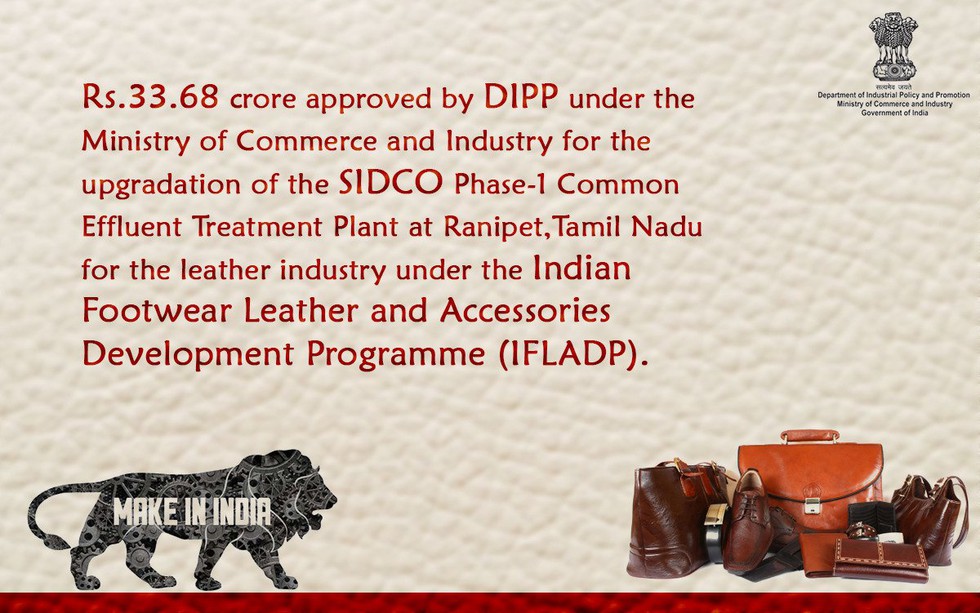
About:
- The package involves implementation of Central Sector Scheme - Indian Footwear, Leather & Accessories Development Programme (IFLADP) with an approved expenditure of Rs. 2600 Crore for 2017-20.
- The scheme aims at development of infrastructure for the leather sector, address environmental concerns w.r.t leather sector, facilitate additional investments and generate employment.
- Under the IFLADP four projects have been approved in Tamil Nadu by DIPP: upgradation of Tala Trichy Common Effluent Treatment Plant (CETP) at Trichy, Pallavaram CETP at Nagalkeni Chrompet, and SIDCO Phase-I CEPT at Ranipet and Perundurai leather industries Eco Security Pvt. Ltd. at Erode.
- DIPP has also given in-principal approval for mega leather cluster at Bantala in West Bengal.
- The Leather Technology, Innovation and Environmental Issues sub-scheme under IFLADP provides financial support at 70% of the project cost to leather clusters to meet the prescribed pollution control discharge norms.
Sub-Schemes:
There are seven sub-schemes under IFLADP which are as follows:
- Human Resource Development (HRD)
- Integrated Development of Leather Sector (IDLS).
- Establishment of Institutional Facilities.
- Mega Leather, Footwear and Accessories Cluster (MLFAC).
- Leather Technology, Innovation and Environmental.
- Promotion of Indian Brands in Leather, Footwear and Accessories.
- Additional Employment Incentive for Leather, Footwear and Accessories Sector.
Prelims Pointers
Oct. 12, 2018
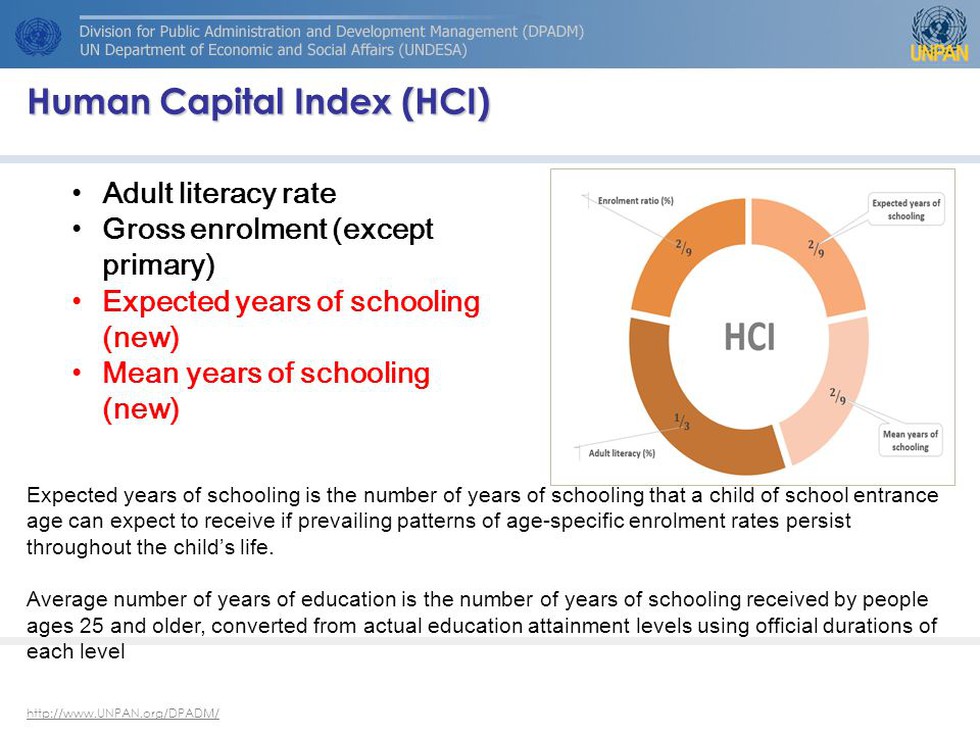
Human Capital Project (HCP):
- Broader theme of the World Development Report (WDR) this year is “The Changing Nature of Work”.
- As part of this report, the World Bank has launched a Human Capital Project (HCP).
- The HCP programme is claimed to be a program of advocacy, measurement, and analytical work to raise awareness and increase demand for interventions to build human capital.
- There are three components of HCP: (i) Human Capital Index (HCI), (ii) a programme of measurement and research to inform policy action, and (iii) a programme of support for country strategies to accelerate investment in human capital.
Human Capital Index (HCI): Brief Overview
- HCI is a cross-country human capital measurement metric, that has been constructed for 157 countries.
- It measures the amount of human capital that a child born today can expect to attain by age 18.
- It conveys the productivity of the next generation of workers, compared to a benchmark of complete standard education and full health.
- The HCI measures the Index outcomes for each country as a fraction of maximum value of 1.
Three Components of HCI:
- Survival, as measured by under-5 mortality rates;
- Expected years of Quality-Adjusted School which combines information on the quantity and quality of education; and
- Health environment using two proxies of (a) adult survival rates and (b) the rate of stunting for children under age 5.
HCI vs HDI:
- Human Development Index (HDI) constructed by UNDP differs from HCI in various ways.
- HCI uses survival rates and stunting rate instead of life expectancy as measure of health.
- HCI uses quality-adjusted learning instead of merely years of schooling as measure of education.
- HCI also excludes per capita income whereas the HDI uses it.
Key findings:
- For 56% of the world’s population the HCI is at or below 0.50; and for 92% it is at or below 0.75. Hence only 8% of the population can expect to be 75% as productive as they could be.
- Advanced economies such as North America and Europe mostly have HCI value of above 0.75, while South Asia and Sub Saharan Africa have the lowest HCI among the regions.
- Singapore topped the poll as it was highly rated for its universal healthcare system, education exams results and life expectancy figures
Indian Scenario:
- Human Capital Index (HCI): The HCI for India is 0.44. i.e. a child born in India today will be only 44 % as productive when she grows up as she could be if she enjoyed complete education and full health. The HCI in India for females is marginally better than that for males.
- India is placed at the 115th position, lower than Nepal, Sri Lanka, Myanmar and Bangladesh.
- Probability of Survival to Age 5: 96 out of 100 children born in India survive to age 5.
- Expected Years of School: In India, a child who starts school at age 4 can expect to complete 10.2 years of school by her 18th birthday.
- Harmonized Test Scores: Students in India score 355 on a scale where 625 represents advanced attainment and 300 represents minimum attainment.
- Learning-adjusted Years of School: Factoring in what children actually learn, expected years of school is only 5.8 years.
- Adult Survival Rate: Across India, 83 per cent of 15-year olds will survive until age 60.
- Healthy Growth (Not Stunted Rate): 62 out of 100 children are not stunted. 38 out of 100 children are stunted, and so at risk of cognitive and physical limitations that can last a lifetime.
- Gender Differences: In India, HCI for girls is marginally higher than for boys.
Prelims Pointers
Oct. 12, 2018
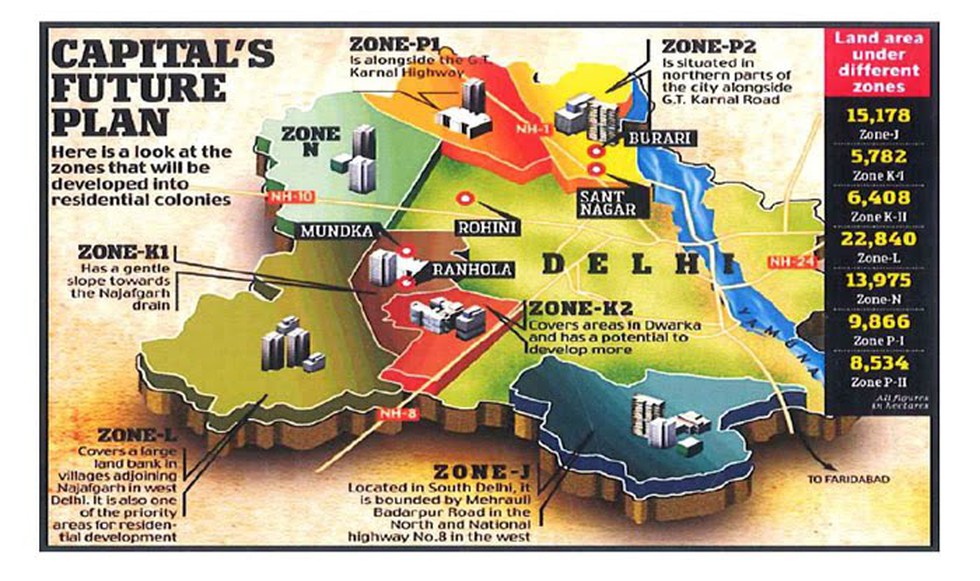
Salient Features of policy:
- Under this, 17 lakh houses will be developed in Delhi, including 5 lakh houses for the Economically Weaker Sections (EWS).
- Under the policy, an integrated sector-based planning approach will be followed. A sector of 250 to 300 hectares of land will be eligible to be developed once a minimum of 70% contiguous land within a sector is assembled.
- The Floor Area Ratio (FAR) has been reduced to 200 as opposed to 400 (which was initially proposed), keeping in mind the availability of resources for the development of a particular land.
- DDA will act only as the “facilitator and planner” and that the “development will be taken up by the developer entities or consortium”.
- Landowners having land of any size can participate in the policy. However, the minimum area required for taking up the development is two hectares.
Prelims Pointers
Oct. 12, 2018
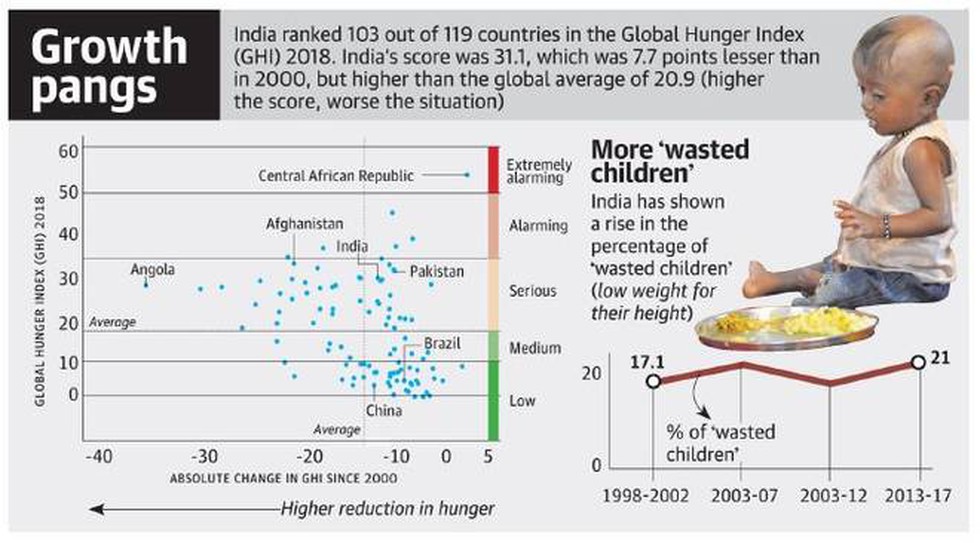
About:
- The Global Hunger Index (GHI) is a tool designed to comprehensively measure and track hunger at the global, regional, and national levels.
- The Index was first published in 2006.
- It is released annually by Welthungerhilfe and Concern Worldwide. The International Food Policy Research Institute (IFPRI) was also involved with the publication until this year.
- Indicators used to calculate hunger levels: (1) undernourishment, which is the share of the population which is undernourished and reflects insufficient caloric intake; (2) child mortality; (3) child wasting (low weight for height); and (4) child stunting (low height for age).
- This calculation results in GHI scores on a 100-point scale, where 0 is the best score (no hunger) and 100 is the worst.
- The 2018 scores reflect data from 2013-2017.
Findings:
- The level of hunger and undernutrition worldwide falls into the serious category, at a value of 20.9, down from 29.2 in 2000
- GHI projections show that at the pace of hunger reduction observed since 2000, approximately 50 countries will fail to reach low hunger levels as defined by the GHI Severity Scale by 2030; at present, 79 countries have failed to reach that designation according to the 2018 GHI.
Indian Scenario:
- India has been ranked at 103 out of 119 countries in the Index, with hunger levels in the country categorised as “serious”.
- India’s ranking has dropped three places from last year, although the results are not accurately comparable from year to year.
- India’s score is 31.1, which was 7.7 points lesser than in 2000, but higher than the global average of 20.9 (higher the score, worse the situation).
- India has shown improvement in three of the indicators namely undernourishment, child mortality and child stunting.
- However, the prevalence of child wasting has worsened. It stood at 20% in 2005 and in 2018, it stands at 21%. i.e. At least one in five Indian children under the age of five are ‘wasted’. The only country with a higher prevalence of child wasting is South Sudan with a child wasting prevalence is at 28%.
Prelims Pointers
Oct. 12, 2018

About:
- MPLADS stands for ‘Members of Parliament Local Area Development Scheme’.
- It is an ongoing Central Sector Scheme which was first launched in 1993-94.
- Salient Features:
- It was launched to enable MPs to recommend small developmental works of capital nature to meet local needs.
- The kind of projects recommended includes assets building such as drinking water facilities, primary education, public health, sanitation, roads etc.
- Fund allocation: Under this, an MP gets ₹5 crore a year to spend on local area development. Funds released under the scheme are non-lapsable.
- The Scheme is administered by the Ministry of Statistics and Programme Implementation, which is responsible for policy formulation, release of funds and monitoring.
- It was launched to enable MPs to recommend small developmental works of capital nature to meet local needs.
- Jurisdiction:
- Member of Lok Sabha can select works for implementation in his/her constituency while a Member of Rajya Sabha can select works in one or more districts of his/her choice in the State from which he/she has been elected.
- However, after the 1999 super cyclone in Odisha, MP were allowed to spend the money outside their constituency and their State in case of Rajya Sabha MPs.
- Member of Lok Sabha can select works for implementation in his/her constituency while a Member of Rajya Sabha can select works in one or more districts of his/her choice in the State from which he/she has been elected.
- During Calamity of severe nature:
- In the event of a ‘calamity of severe nature’ in any part of the country, an MP can recommend works up to a maximum of ₹1 crore for the affected district.
- From the day an MP makes such contribution, concerned authorities have to identify relief works in one month and the same should be implemented within eight months.
- In the event of a ‘calamity of severe nature’ in any part of the country, an MP can recommend works up to a maximum of ₹1 crore for the affected district.
Prelims Pointers
Oct. 12, 2018

About:
- Randamoozham is a 1984 Malayalam novel.
- It is a retelling of the Indian epic Mahabharata from the perspective of Bhima, the second Pandava. It was translated into English as Second Turnin 1997.
- Awards won: The work won the Vayalar Award in 1985 (this award is given for the best literary work in Malayalam) and Muttathu Varkey Award in 1994.
- It is authored by T. Vasudevan Nair. He is a recipient of Padma Bhushan; Jnanipath award (for his contributions to Malayalam literature) and Sahitya Akademi Fellowship.
- Now T. Vasudevan Nair has filed a case barring director V.A. Shrikumar Menon from making a film on the novel as Mr. Menon’s film project failed to take off even four years after he had sold him the rights to the script.

